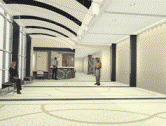
College of Dentistry: Faculty Publications
Document Type
Article
Date of this Version
1-1990
Abstract
Since the introduction of air-powder polishing systems in 1977, air-powder polishing has been shown to be an efficient and effective method for removal of stain and plaque. Air-powder polishing systems use air, water, and sodium bicarbonate to deliver a controlled stream that propels specially processed sodium bicarbonate particles to the tooth surface. It has been demonstrated that this increasingly popular technique requires less time and less physical exertion by the operator than polishing with a rubber cup and prophylaxis paste. In addition, no heat is generated with this type of system.
Studies of the air-powder polishing method have examined its efficacy in stain removal and its effects on soft tissue, hard tissue, and restorative materials. William et al. found that air-powder polishing treatment imparted a nonuniformly roughened surface to enamel. Atkinson et al. and Toevs, however, found root surfaces to be smooth after treatment with the airpowder polishing system. Furthermore, this system has been shown to produce some immediate soft tissue trauma. In all of these studies this gingival trauma has been shown to be transient and clinically insignificant.
Although air-powder polishing systems have been shown to be effective, it has been demonstrated that these systems have the potential for removing considerable amounts of resinous restorative material. On the other hand, porcelain, amalgam, and gold alloy restorations generally are not significantly affected. However, Barnes and associates did note an erosion of cement from the margin of cast-alloy restorations. The purpose of this two-part study, based on studies to date that have shown deleterious effects on resinous materials and cement, was to examine the efficacy and effects of an air-powder polishing system on orthodontically bracketed and banded teeth. Orthodontically bracketed and banded teeth certainly provide a greater challenge for routine cleaning that may be met by an air-powder polishing system.
Specifically, this study investigated the time required for removal of stain and plaque from orthodontically bracketed and banded teeth as well as the efficacy of the air-powder polishing system. In addition, the effects of airpowder polishing on composite and zinc phosphate cements used to anchor orthodontic brackets and bands were examined with a scanning electron microscope (SEM).


Comments
Published in American Journal of Orthodontics and Dentofacial Orthopedics 97:1 (January 1990), pp. 74–81. Copyright © 1990 Elsevier Inc. Used by permission. http://www.sciencedirect.com/science/journal/08895406